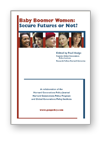JERUSALEM, ISRAEL: MAY 27, 2012:  This is my first time in Israel. Since I was coming from Abu Dhabi, to fly here took some maneuvering. Turns out that one of the few ways to fly to Israel from an Arab country is through Amman, Jordan on Royal Jordanian Airlines.
This is my first time in Israel. Since I was coming from Abu Dhabi, to fly here took some maneuvering. Turns out that one of the few ways to fly to Israel from an Arab country is through Amman, Jordan on Royal Jordanian Airlines.
When boarding my flight to Israel’s Ben-Gurion airport, one thing that strikes you right off the bat is that Jordanian security is extremely tight. For the 35+ minute flight, there were three Jordanian security guards – one sat right in front of the cockpit’s entrance, the other two sat in the first rows of first and coach. The flight was jolting because the plane only flew at about 8,000+ feet (partially for security reasons) and the heat from the desert was creating very sever updrafts. As is customary on all Arab airlines I have taken, the flight map on the airplane’s passengers’ monitors did not have Israel on the map – curious since this flight was going to Israel – a country the map showed did not exist.
When I got to Israel’s Ben-Gurion airport, it was a religious holiday which meant that the air terminal was empty and most of the venues were closed. As is my custom, I began my search for a Starbucks only to sadly learn that Starbucks was no longer operating in Israel. The reason for its demise I was told was that: “Israel coffee is better” – though I have to say not the coffee I tasted.
After getting over this shock and highly under-caffeinated, I headed for Jerusalem. I was very moved at the Western/Wailing Wall and pressed on to the West Bank where I visited a Palestinian refugee camp which has been there since the 1950s. From there, I witnessed some West Bank Israeli settlements which I thought would be buildings of a temporary nature. To my surprise, they reminded me of a California planned community complete with shopping malls and mixed housing. These settlements appear to be permanent.
One thing that struck me throughout my West Bank visit was the heightened level of security and tension. The Israelis have constructed the 460+ mile West Bank barrier to separate Israel/Israel West Bank from the Palestinian West bank. The barrier is a combination of fences, trenches and walls. Concertina wire and guard towers are everywhere as are Israeli/Palestinian check points maned by gun totting security forces.
On my visit, I talked with Israelis and Palestinians about the challenges facing the region. What came out of these conversations was a sense that many felt that the situation was hopeless, too many unforgivable transgressions had happened between the cultures and there basically was little/or no trust. While all appeared to accept the two state solution, none thought this would lead to any lasting peace. Things would only get worse, and many felt that the two sides were polarizing more to the extremes.
From the Palestinians I talked with, among other issues, it appeared that the most emotional issue involved the unauthorized Israeli West Bank settlements. Many thought the Israeli government had an intentional policy to take Palestinian land and build settlements. While these alleged facts are in dispute, many Palestinians still believe them. As to the Israelis, there is a strong feeling and bitterness about the vicious terrorist attacks on their people. While some of these attacks may have actually been due to foreign power (Iran,Syria) covert interventions, Israelis strongly feel they should not be forgotten. Israel must protect itself from future attacks at all costs.
In spite of the recent efforts of the international community to help the region secure a lasting peace, things seem to remain the same. Maybe the two state solution is the answer. Suffice it to say, regardless of what solutions are arrived at, there must be a concurrent joint effort on the part of the Israeli/Palestinian leadership to learn from Nelson Mandela and take the first steps towards instituting an exploratory dialogue of forgiveness and reconciliation between their people.

